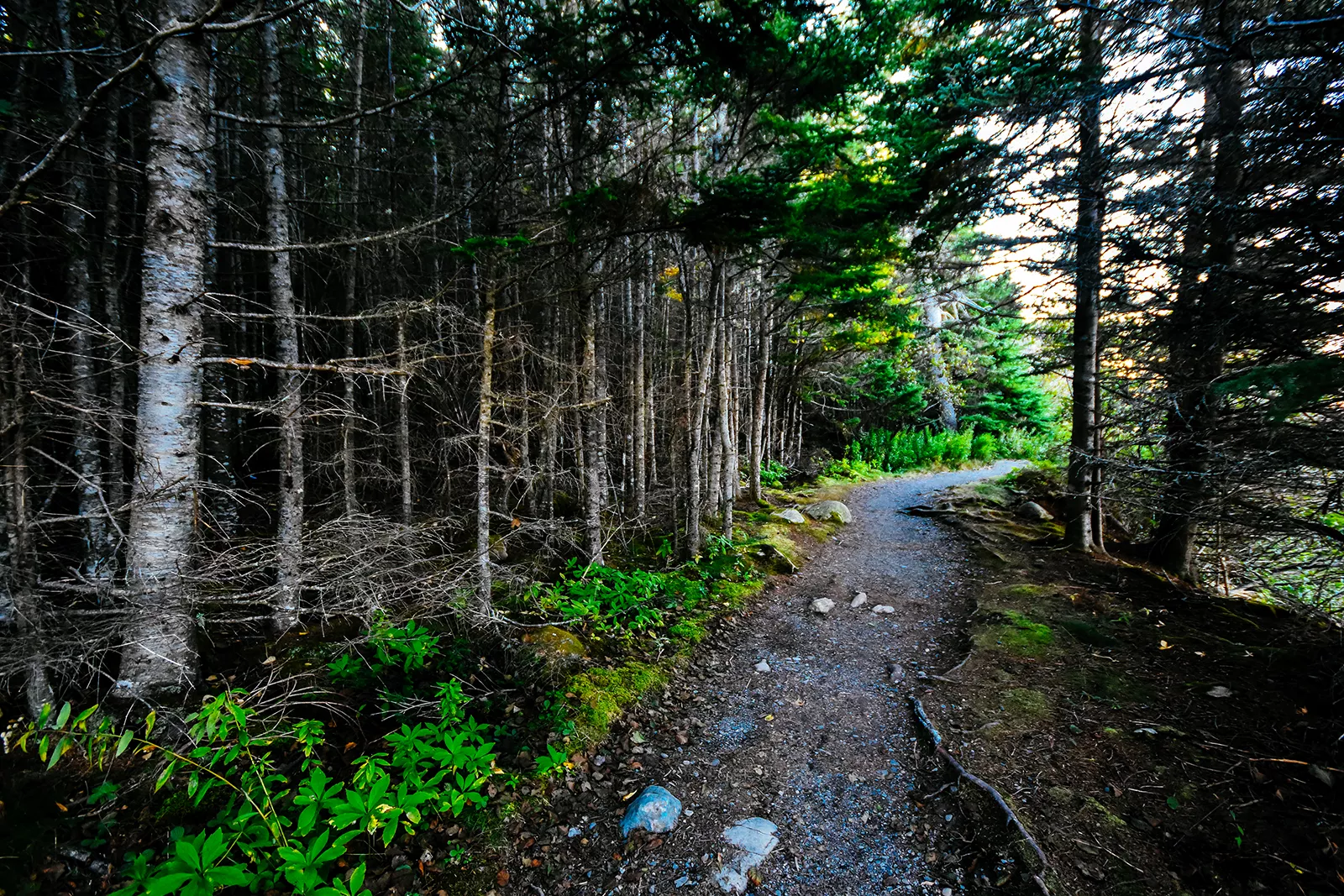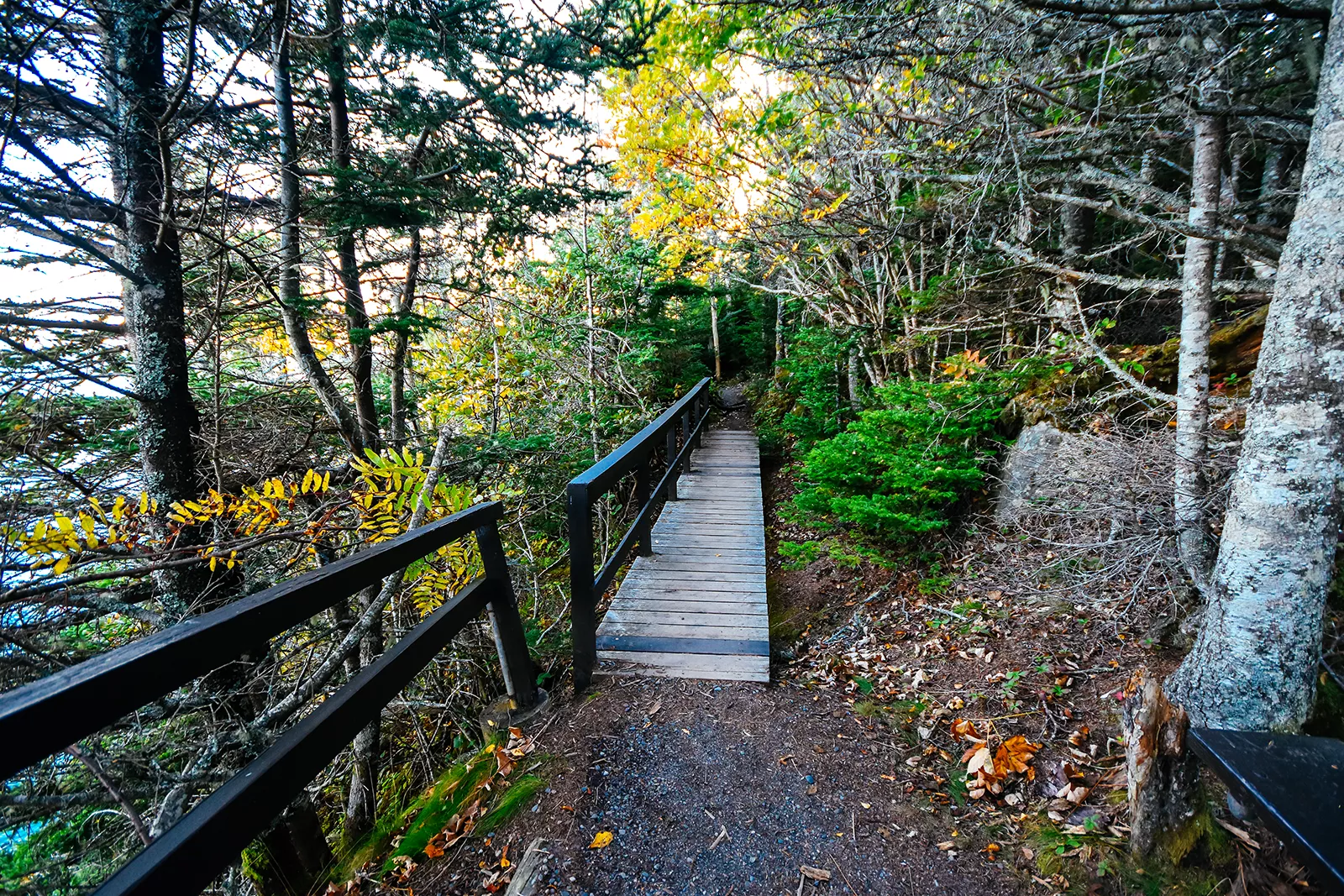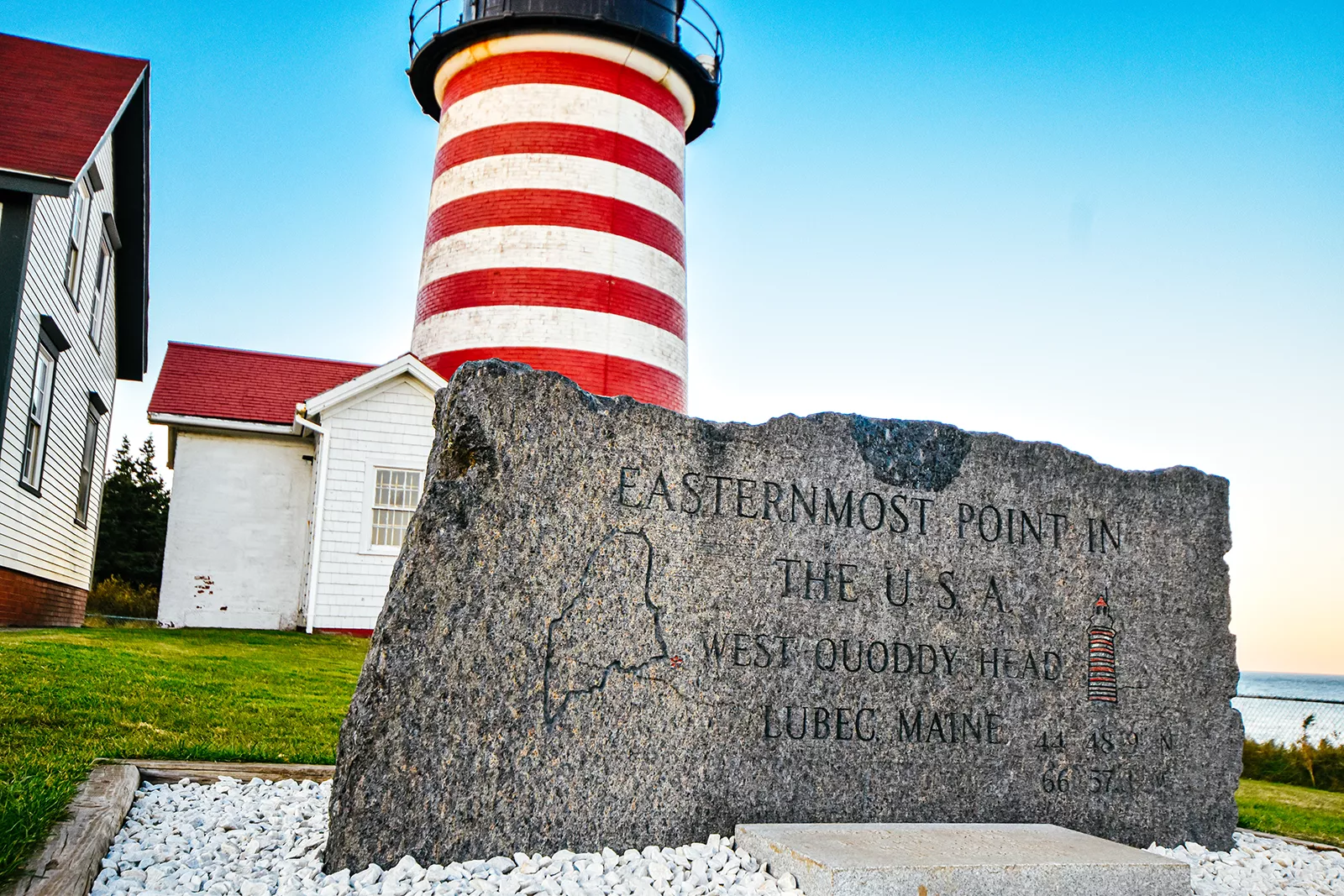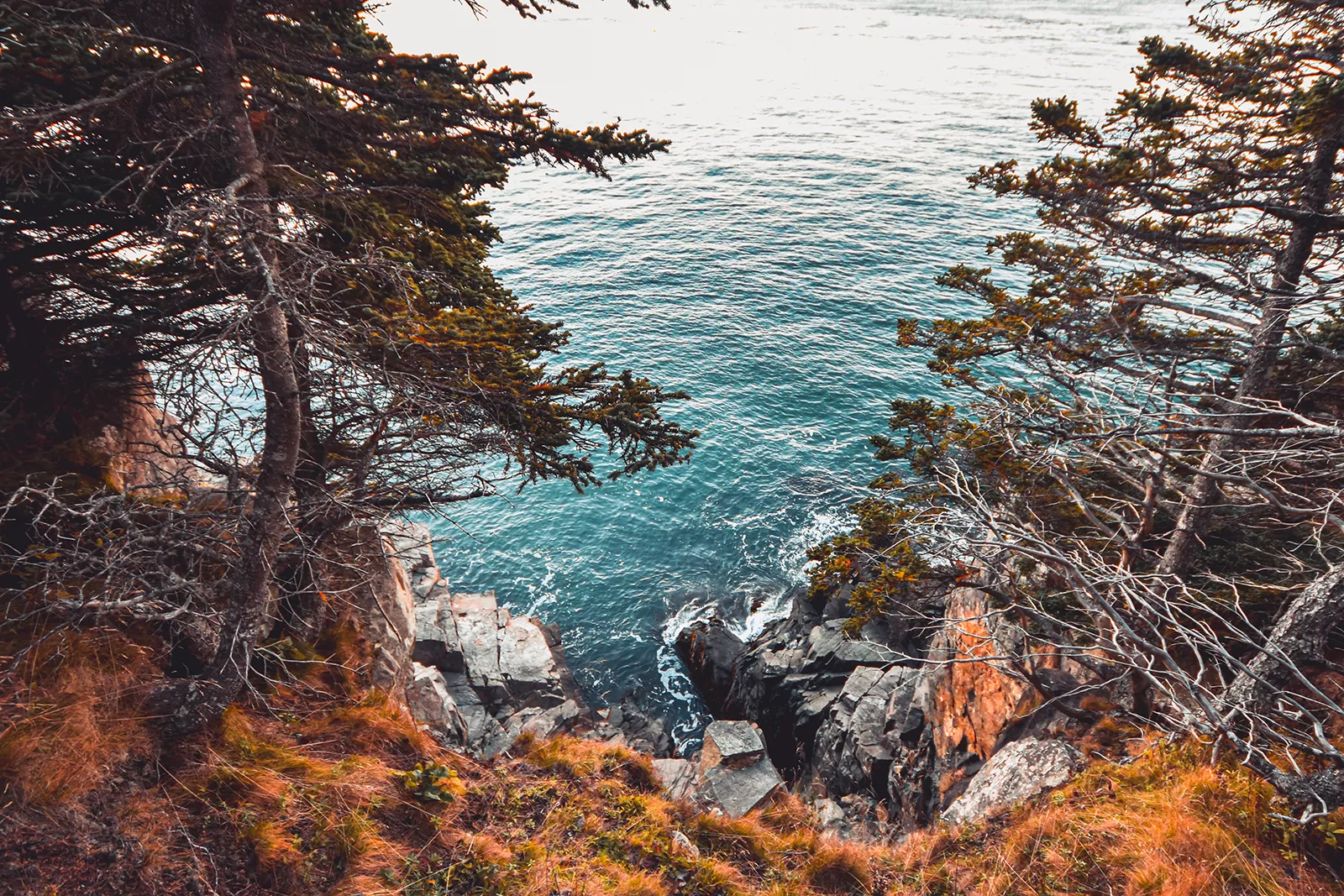Quoddy Head State Park: Exploring Maine’s Easternmost Point
Nestled on the easternmost peninsula of the United States, Quoddy Head State Park stands as a testament to both nature’s grandeur and human ingenuity. With a history spanning over two centuries, this park has not only offered guidance to sea vessels navigating treacherous waters but also provided a sanctuary for nature enthusiasts. So, let’s delve deeper into this remarkable destination, where the name Quoddy itself echoes with Native American heritage, meaning a fertile and beautiful place.
Quoddy Head State Park’s rugged coastline and distinctive dark cliffs tell a story that dates back approximately 420 million years ago. These cliffs are a testament to a volcanic eruption that erupted magma from beneath the ocean floor, interweaving it with existing rock layers. The result? A coarse-grained, dark rock known as gabbro, which, over time, emerged as the dominant feature of this picturesque landscape.
Visiting the Easternmost Point in the U.S. is a remarkable experience! The lighthouse against the coastal backdrop offers captivating views, and nearby cliffside trails provide a chance to immerse in nature’s beauty and enjoy remarkable vistas.
The iconic West Quoddy Head Light, which graces the park, has been a guiding light for mariners since its commission by none other than President Thomas Jefferson in 1808. While the lighthouse we see today, adorned in striking red and white stripes, was installed in 1858, replacing its predecessor, its historical significance remains undiminished. West Quoddy Head Light was one of the pioneers in utilizing a fog bell and a steam-powered foghorn to avert maritime disasters in the foggy waters of Quoddy. To this day, its beacon shines brightly with two white flashes every 15 seconds, offering a reassuring presence to those navigating the nearby seas.
Today, the management of this historic lighthouse falls under the capable stewardship of the Maine Bureau of Parks and Lands, with invaluable assistance from the West Quoddy Light Keepers Association. While the lighthouse tower itself is not accessible to the public, the visitor center, former light keeper’s quarters, and the museum are open to visitors from 9 am to sunset between May and October.
Quoddy Head State Park isn’t just a haven for history buffs and hikers; it’s also a paradise for wildlife enthusiasts. In the summer, lucky visitors may spot humpback, minke, and finback whales offshore, accompanied by rafts of eider, scoter, and old squaw ducks. Birdwatchers are in for a treat, as well, with sightings of kittiwakes, gannets, black-bellied plovers, ruddy turnstones, and purple sandpipers, often roosting on Sail Rock.
As the seasons change, migration periods bring hundreds of shorebirds congregating near the park’s western boundary at Lubec Flats and Carrying Place Cove, named for its historical use as a canoe portage site by Native Americans. Birding opportunities extend into winter, with sea ducks, murres, razorbills offshore, and frequent bald eagle sightings.

Quoddy Head State Park also holds a hidden gem for nature enthusiasts – an easy, one-mile round-trip walk leading to an unusual coastal plateau bog, also known as a heath. Here, you’ll encounter sub-arctic and arctic plants that are rarely seen south of Canada. Shrubs like black crowberry, baked appleberry, and Labrador tea dominate the landscape, along with carnivorous plants such as pitcher plants and sundew. A second bog at the park’s western boundary, Carrying Place Cove Bog, has earned recognition as a National Natural Landmark.
The rich history of Quoddy Head State Park extends beyond its geological wonders and iconic lighthouse. The park’s name, derived from the Native American Passamaquoddy tribe, reflects its heritage as a “fertile and beautiful place.” The park’s impressive black cliffs are remnants of the Silurian Age, when volcanic magma intruded between existing rock layers and solidified into the dark, coarse-grained gabbro rock we see today.

In 1962, the state took action to secure this exceptional property by purchasing a substantial portion of the current acreage from private landowners. As part of the Maine Lights Program, which involved the transfer of 28 Maine lighthouses to nonprofit organizations or agencies, the deed to West Quoddy Head Light briefly passed to the Island Institute before ultimately becoming the responsibility of the Maine Bureau of Parks and Lands in 1998. Today, the Bureau manages this historic light, which is one of 63 active lighthouses along the coast of Maine.
Over the years, the lighthouse has seen various sources of illumination, from sperm whale oil to lard oil in the 1860s, then kerosene around 1880, and finally, electricity in the 1890s. Its distinctive 15 red and white stripes, designed to enhance visibility in snow and fog, were added during the 1858 reconstruction when the original stone tower was replaced by brick. While the tower itself remains closed to visitors, the former light keeper’s quarters, now staffed by dedicated West Quoddy Light Keepers volunteers, offer a glimpse into the past.

As you explore Quoddy Head State Park, there are a few special considerations to keep in mind. The park is often shrouded in fog, a natural occurrence when warm, moist air from the mainland meets colder air over the surrounding waters. Even in the height of summer, these conditions can create chilly environments, so dressing in layers is advisable. Low visibility is common, so carrying a park map while hiking is a prudent choice.
Safety is paramount, especially when traversing cliffside trails or the shoreline. Tides can fluctuate dramatically, with variations of more than 20 feet and rapid changes, so exercise caution and supervise children closely.

Respect for the park’s boundaries is essential, and trespassing on adjacent property is strictly prohibited. Carry your own drinking water for hikes and picnics, as no water sources are available within the park.
Additionally, in late spring and summer, be prepared for encounters with mosquitoes and black flies. While deer ticks are not abundant, they do exist in the area, so daily tick checks are advisable to prevent tick-borne diseases like Lyme disease.
Whether you’re a history buff, an avid hiker, a birdwatcher, or simply someone seeking to immerse themselves in the natural beauty of Maine’s easternmost point, Quoddy Head State Park offers an array of activities and experiences that will leave you captivated and inspired. From its rich history to its breathtaking landscapes, this park has something for everyone. So, don’t miss the opportunity to explore and fall in love with this remarkable destination in Lubec, Maine.
Quoddy Head State Park Trails
Quoddy Head State Park beckons with a network of scenic trails, each offering a unique perspective on the park’s natural beauty. These trails commence at the parking lot, ensuring easy access for all visitors.
For those seeking a moderate hike, the 0.75-mile Inland Trail is an excellent choice. It meanders through lush woods, adorned with a tapestry of mosses and lichens, gradually ascending to the picturesque Green Point.
Nature enthusiasts will find the 1-mile Bog Trail a fascinating journey. This trail features a raised boardwalk and informative signs describing the unique flora that thrives in the area’s acidic bog environment. To protect this delicate ecosystem, be sure to stay on the boardwalk.
Extending over 1.25 miles, the Thompson Trail offers a level wooded route between the Bog Trail and the Coastal Trail. Along Carrying Place Cove, hikers can savor the beauty of a 1,200-foot sandy beach.

The crown jewel of the park’s trail system, the 4-mile Coastal Trail, offers a more challenging terrain with occasional steep and rocky sections. But the effort is rewarded with breathtaking coastal views that include Gulliver’s Hole, a narrow chasm formed by the erosion of volcanic gabbro rock; High Ledge, a 150-foot-high bluff; and Green Point, a massive ledge outcropping that beckons hikers toward the beach.
What’s Nearby Quoddy Head State Park
Quoddy Head State Park’s proximity to other captivating destinations in eastern Maine makes it an ideal starting point for further exploration. Just a short drive away, you’ll find the picturesque town of Lubec, known for its quaint charm and the iconic Franklin Delano Roosevelt Memorial Bridge, connecting it to Campobello Island, Canada. Campobello Island itself offers a wealth of attractions, including the historic Roosevelt Campobello International Park, where you can step into the past and visit the summer home of President Franklin D. Roosevelt. For those seeking more natural wonders, a visit to Cobscook Bay State Park, renowned for its dramatic tides and abundant wildlife, is a must. Meanwhile, the town of Eastport, known for its vibrant arts scene and lively waterfront, is a short drive south. Lastly, don’t miss the opportunity to explore the stunning landscapes of the Down East Sunrise Trail, a multi-use trail that winds its way through the region, providing endless opportunities for outdoor enthusiasts. The Quoddy Head region truly offers a gateway to a world of discovery in eastern Maine.
Quoddy Head State Park Parking Information
Quoddy Head State Park is easily accessible by road and offers convenient parking options. To reach this enchanting destination, take Maine Route 189 and follow the signs to the park, which is located four miles off Route 189 in Lubec, Maine. As you approach, keep an eye out for the striking West Quoddy Head Light, which will serve as a beacon guiding you to the park’s entrance. The park is open year-round, but for those planning to visit the visitor center, light keeper’s quarters, and museum, these facilities are welcoming guests from 9 am to sunset daily, starting from Memorial Day weekend through mid-October. Please note that admission fees apply: $3 for Adult Maine Residents, $4 for Adult Non-Residents, and $1 for Children (subject to change). During the off-season, visitors are still welcome to enjoy the park by parking outside the main gate, ensuring that the gate is not blocked, and entering during the same hours as mentioned earlier. Quoddy Head State Park invites you to embark on a memorable adventure, offering not only natural beauty but also historical significance waiting to be explored.



